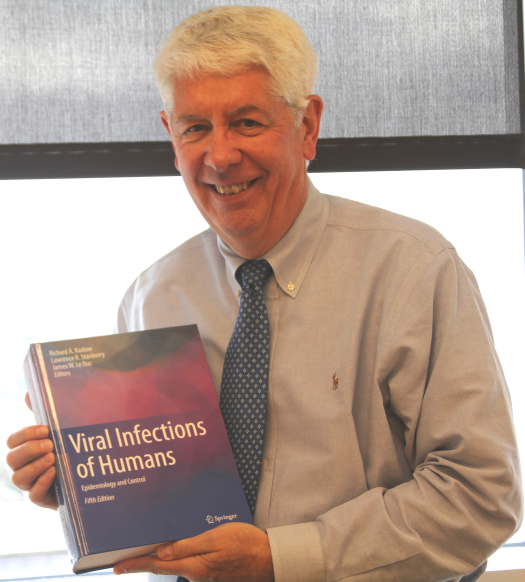
Scientists at the University of Texas Medical Branch are known globally for their research on viruses — they wrote the book on it, or at least several chapters.
From alphaviruses to zoonotic transmission, “Viral Infections of Humans: Epidemiology and Control” (Springer Press, 2014) has been in print for more than 40 years and recognized as the definitive textbook on viruses and their effects on people.
James W. Le Duc, director of the Galveston National Laboratory at UTMB, served as editor with Richard A. Kaslow of the University of Alabama and Lawrence R. Stanberry, of Columbia University in New York, for the fifth and newest edition.
“It was a challenge,” said Le Duc, “as the last edition was published 17 years ago. It has to be comprehensive enough to include the best of the older material while capturing the dizzying pace of discovery in the biomedical sciences.”
The first section of the book addresses that technological progress, including new disciplines such as bioinformatics and computational biology. The chapter on disease surveillance systems highlights sophisticated approaches to data gathering and the evolving role of the portable devices that power social media.
Le Duc contributed to the chapter “Bunyaviruses: Hantavirus and others,” written by UTMB colleagues Alexander Freiberg, associate professor of pathology and Dennis Bente, assistant professor of microbiology and immunology.
Scott Weaver, internationally known for his work in mosquito-borne viruses and director of UTMB’s Institute for Human Infections and Immunity, co-authored the chapter “Alphaviruses: Equine Encephalitis and others,” along with Ann Powers, formerly a fellow at UTMB and now at the Centers for Disease Control and Prevention in Fort Collins, Colorado.
Thomas Ksiazek, former head of the Special Pathogens Branch at the CDC and director of high containment operations at UTMB’s Galveston National Laboratory, wrote the chapter “Filoviruses: Marburg and Ebola.” Ksiazek spent more than six weeks in Sierra Leone earlier this year at the request of the CDC to help with the ongoing Ebola outbreak there.
More than 90 authors compiled 47 chapters to illustrate this portrait of the viral landscape today- building on the foundation of previous authors and providing a glimpse of future possibilities.